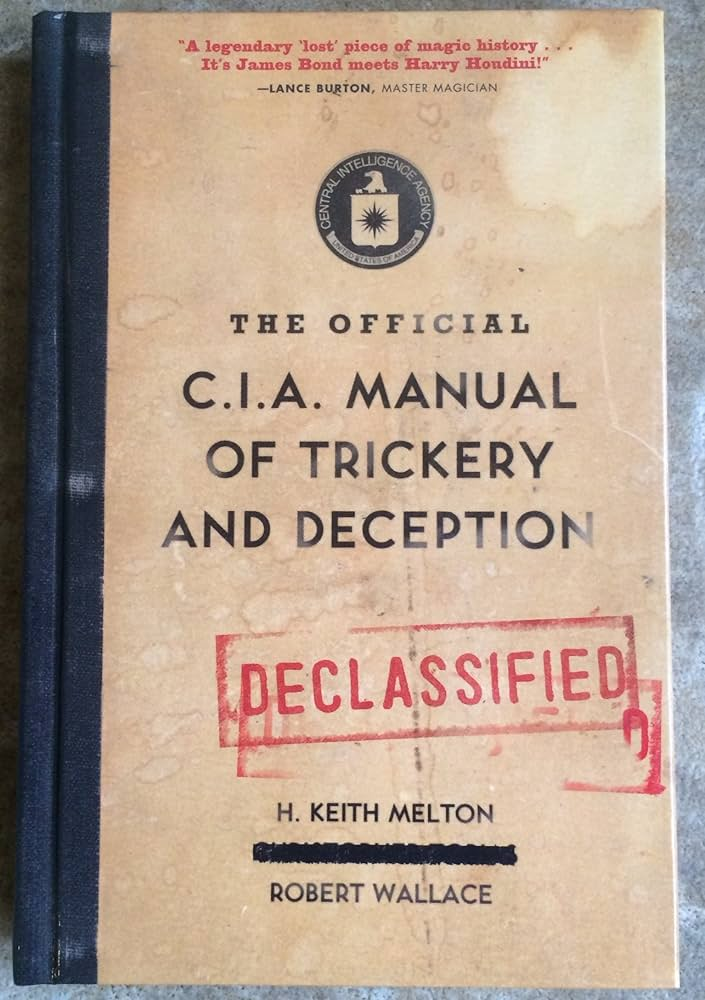The Art of Deception: How the CIA Learned from Magicians
- OCSA Team

- Feb 28
- 3 min read
When Espionage Meets Illusion...
Imagine slipping a pill into a drink without anyone noticing. Or making an object vanish in plain sight. These are magician’s tricks, yes, and they are real techniques used by CIA operatives.
In the 1950s, during the height of the Cold War, the CIA sought the help of John Mulholland, a world-renowned magician, to teach their spies the art of "trickery". The result? A top-secret manual that applied magic principles to espionage.
Let’s dive into how the CIA turned magic tricks into real-world spycraft—and what it means for deception in today’s world.

Magic and Espionage: Two Sides of the Same Coin
At first glance, magicians and spies seem to have little in common. But both professions rely on the same fundamental skills:
✅ Misdirection – Controlling what the target sees (or doesn’t see).
✅ Sleight of Hand – Manipulating objects without detection.
✅ Stage Management – Creating a believable illusion that feels real.
✅ Disguise and Identity Shifting – Transforming appearances in seconds.
The CIA understood that successful espionage depends on perception: what a person believes is happening versus what is actually happening.
And who better to teach this than a master illusionist?
The CIA’s Secret Magic Manual
In 1953, John Mulholland was commissioned to write a classified espionage manual titled Some Operational Applications of the Art of Deception. The techniques he shared were designed to help agents conduct secret operations without detection.
Key Tricks from the CIA's Manual:
1️⃣ Surreptitious Poisoning
The CIA needed ways to slip pills, powders, or liquids into food or drinks without raising suspicion. Mulholland taught operatives to:
Use misdirection (light a cigarette, drop a match, or adjust a sleeve) to hide a quick motion.
Handle small objects covertly in the palm of the hand.
Use pre-planned “accidents” to spill or swap drinks naturally.
2️⃣ The Art of Disguising Messages
Magicians hide objects in plain sight. CIA operatives applied this idea to:
Conceal messages inside cigarettes, matchbooks, or hollowed-out coins.
Use dead drops, leaving messages in public places where another spy could retrieve them unnoticed.
Employ coded gestures or objects (like moving a parked car to a different spot) as secret signals.
3️⃣ The Power of Identity Shifting
Just as a magician can transform in front of an audience, spies had to change identities on the fly. The CIA used:
Wigs, fake facial hair, and altered clothing to create instant disguises.
The “Jack-in-the-Box” Trick – A decoy mannequin that popped up in a car seat after an agent had slipped away, tricking surveillance teams into thinking they were still inside.
4️⃣ Evading Surveillance Like a Magician
Mulholland emphasized the importance of understanding sightlines.
Turning a corner at the right moment could provide just enough time for an agent to switch places with a disguised partner.
Using movement as camouflage – For example, dropping an item at the exact moment a bus door opens to disappear into the crowd unnoticed.
From Cold War Spies to Modern-Day Manipulation
While these techniques were developed for intelligence operatives, the principles of deception are still used today (in politics, marketing, and even digital scams).
Social Engineering: Hackers use psychological tricks to manipulate people into revealing personal information, just like spies used misdirection.
Misinformation Campaigns: Governments and organizations use staged narratives to control public perception (think: fake news, AI-generated deepfakes).
Persuasive Marketing: Advertisers use the same attention control strategies as magicians and spies to make products seem more desirable.
The real question is: How do we protect ourselves from manipulation?
How to Spot and Resist Deception
Want to think like an intelligence officer?
Here’s how to defend yourself from modern-day deception:
✅ Pay attention to what’s NOT being shown. Deception often hides in what’s left out.
✅ Question the narrative. Ask: Who benefits from me believing this?
✅ Look for misdirection. If something seems too convenient or theatrical, it probably is.
✅ Follow the money. In politics, business, and media, deception is often about power and profit.
The CIA’s collaboration with a magician wasn’t just a quirky Cold War experiment. It was a recognition of a fundamental truth: Reality is shaped by perception.
Whether in espionage, marketing, or social influence, those who control perception hold immense power.
The next time something seems too real, too convenient, or too polished, remember: it might just be another trick.




Comments